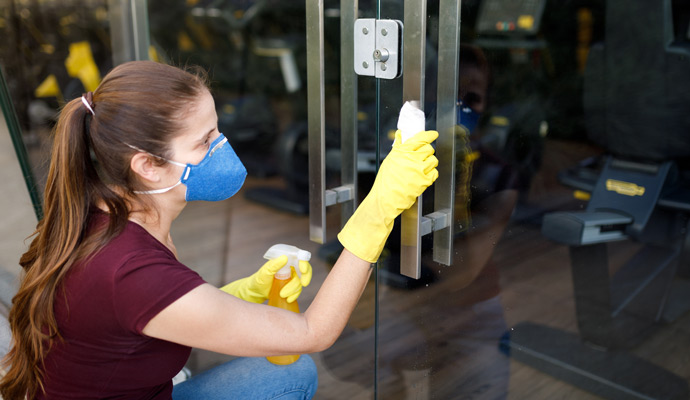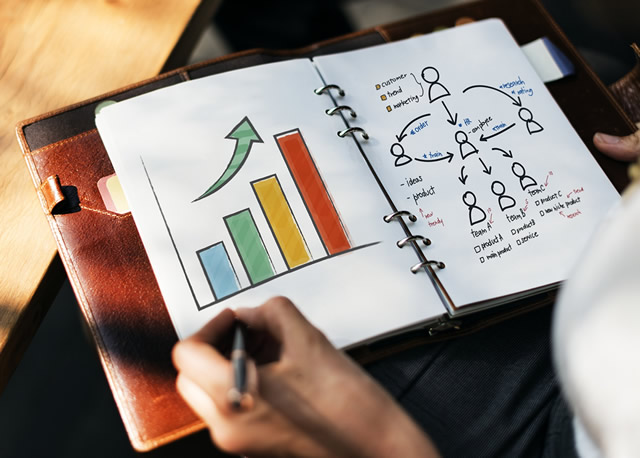What COVID-19 is revealing about your customers and employees

The coronavirus pandemic is not simply a crisis to be endured until it’s over. True, lockdown restrictions are lifting in many parts of the world. But as people venture cautiously out, they are encountering not just a world interrupted, but a world changed. We have all been part of an ongoing and extraordinary — if involuntary — experiment. Companies have had to scramble, improvise, and invent with no time to lose or second-guess, and customers have had to rethink priorities and loyalties.
The pandemic has changed the way businesses of all stripes are operating. Many retailers have had to abandon or completely redesign some sales and distribution channels while ramping up others. Stores that relied on foot traffic and in-store browsing now hope that online shopping and curbside pickup will suffice. Other companies have had to look for new markets as their customary ones disappeared. (One of us is now getting groceries from a food wholesaler that shifted to retail when many restaurants in New York City shuttered, even if temporarily.) Consultants, lawyers, and accountants are meeting their clients over video chat.
If there is a positive for businesses, it’s that COVID-19 is giving them the chance to learn more about their customers, the strengths and weaknesses of their processes and operations, their competition, and their employees, who are often being stretched in new ways while working under unfamiliar circumstances. What businesses do with this knowledge can help them navigate a new path forward.
1. You can learn more about your customers as people. Their kids, dogs, and cats have shown up in virtual meetings; you’ve seen their personal bookshelves. People in your organization are having conversations they have never had with customers before as everyone tries to solve problems that no one has ever encountered.
If you’ve been listening carefully, you’ve gained new insights about what matters most to your customers. Is it price, quality, timeliness, customization, loyalty, or communication? How are you, your team, and your offerings meeting (or not meeting) their new needs?
Such knowledge can lead to new opportunities for both parties. For instance, just as there may have been customers you have left stranded because of gaps in your ability to execute, you may have also encountered people left stranded by your competitors. Find out why these people have come to you. What specifically were they not able to get from your rivals? Are these needs temporary, or were they always top priority? Do you have a shot at their business post-pandemic?
2. Building confidence will be key to maintaining your customer relationships. You may need to re-earn customer trust by providing tangible evidence of things that before had been assumed — simple hygiene, for example. “Before, cleanliness happened behind the scenes,” Phil Cordell, Hilton’s global head of new brand development, told the Los Angeles Times. Now, during peak check-in and checkout times, Hilton is “going to have a team member in the lobby who is visibly cleaning.” At stores, customers will be looking for social-distancing markers leading to the cash registers, management of people traffic throughout the aisles, and hand sanitizer near the entrance, as well as clear signs that employees are acting as role models of safe behavior.
If you’ve been listening carefully, you’ve gained new insights about what matters most to your customers. How are you, your team, and your offerings meeting (or not meeting) their new needs?
Even if your customer relationships rely less on contact in a physical space, you’ll still need to look for ways to build confidence given all-pervasive uncertainty. Some companies are proactively reaching out to customers with what one consultant described to us as “love calls.” How much better is a human voice (“Hey, just checking in — how’re you doing?”) than an email that could easily be sent to anyone (“We’re here for you”)? Such calls, he said, aren’t directly about generating business, but keeping his bonds with clients both strong and supple.
We see evidence that phone calls have become more valuable. In April, Verizon said it was handling an average of 800 million wireless calls each weekday, according to the New York Times. By comparison, that figure is more than twice the number of calls made on Mother’s Day, which historically has been one of the days with the highest call volume. The length of calls has also increased by a third, according to Verizon. AT&T reported similar spikes, with the number of cellular calls up 35 percent and Wi-Fi–based calls nearly doubled.
3. You can see which of your sales and marketing channels are narrow, shallow, or barely navigable. An omnichannel design supposedly allows customers to shift easily from physical to virtual, from analog to digital. With increased reliance on the former versus the latter, you now know exactly how well your setup works, and which parts need additional attention.
Investments you make to improve the digital experience will almost certainly pay off well beyond the end of the pandemic. For example, you may find that employee preferences have shifted. “Some people, both in the U.S. and overseas, have started going back to offices,” an employee of a commercial real estate startup told us. “Between the masking, the social distancing, and not being allowed to bring in things from the outside, I’m better off at home.”
Not only that, as you roll out these capabilities, customers may be — at least temporarily — more forgiving than they would have been before the pandemic. “Our clients pretty much got hit with the same set of problems and challenges at the same time as we did,” the chief operating officer of a Fortune 1000 financial-services firm told one of us. “We all hit some bumps along the way, which meant that their expectations were tempered because of what they themselves were experiencing.”
4. As you improvise, you should embrace new business models, regardless of whether they’re born of necessity or accident. The novel coronavirus is also exposing gaps in business ecosystems. For decades, supply chains were managed to minimize cost, not to ensure resilience. That will change, both upstream and downstream. The pharmaceutical industry, which in the U.S. deeply relies on imports for most of its active ingredients, is just one of many examples.
Michael Araten, CEO of Sterling Drive Ventures, a Philadelphia-based manufacturer of plastic products (including injection moldings and K’NEX toys) was facing a downstream problem: His raw materials are plentiful and cheap, but many of his downstream customers closed or reduced operations in the spring. Araten repurposed some manufacturing lines to make components for swabs and other healthcare products, opening a new business while the old one is partly idled. He expects the new business to become permanent.
As the restaurant food wholesaler referenced above has learned about its new customers, it has twice redesigned its website to make it friendlier for them. It has bought a fishmonger and partnered with a farm whose greenmarket sales had slowed. Just as important, it has become efficient enough to lower its minimum purchase price, adding more customers to its new line of business. Improvisation born of necessity — and the fruits of that improvisation — does not need to die when the need itself does.
5. Capture what you have learned. First, ensure that the conversations you are having with customers and with frontline employees continue to be not just about selling, but are also about listening. Second, make sure you have learning loops, feedback, feed-forward, and design knowledge capture into remote-work protocols. For example, make sure someone is assigned to be the scribe during video calls, Jessica Lipnack, coauthor (with Jeffrey Stamps) of the classic and prescient 1997 book Virtual Teams, recently told one of us in a podcast. Similarly, use good sales management and project management tools to document insights and decisions at every customer touch point; especially as your people continue to work remotely, it’s important to capture what they learn for the benefit of the company as a whole.
Finally, make sure all this knowledge is fed to the people who are planning for recovery. The world we return to will be forever changed, and it will belong to the people who learn.
Published at Mon, 29 Jun 2020 05:00:00 +0000




